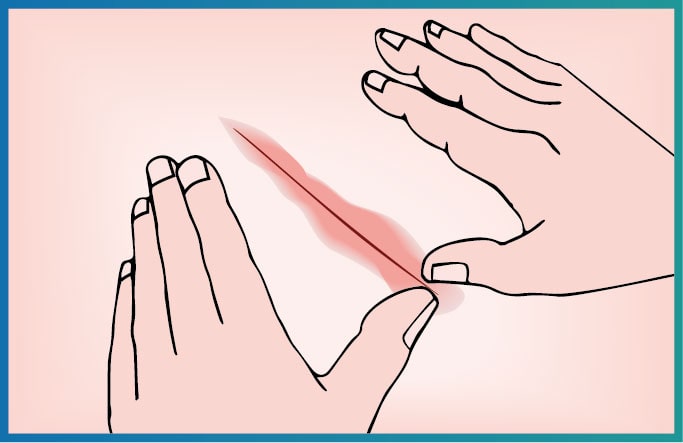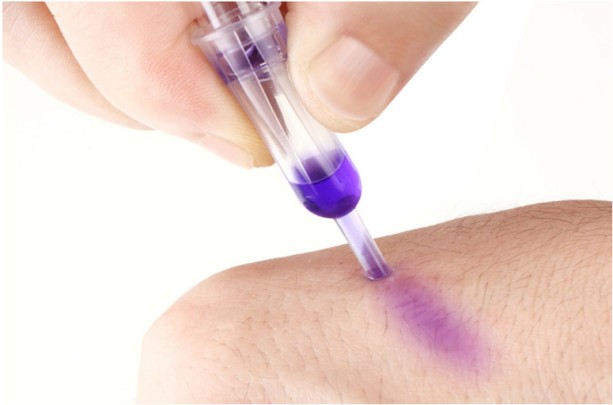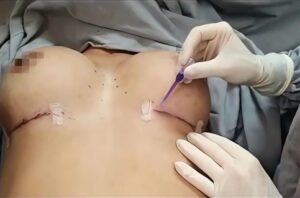Surgical glue, also known as tissue adhesive, is a medical adhesive used to bond or seal tissues together. It acts rapidly, polymerizing within 30 seconds at room air, and is best for linear lacerations under low tension.
Surgical glue is a simple, rapid, and painless method of wound closure with low complication rates, making it increasingly popular in surgical procedures. Now that we understand the potential benefits of surgical glue for wound closure, let’s look at how to use surgical glue. Here are the general steps for applying surgical glue:
- Clean the wound: Before applying the glue, the wound must be cleaned and dried thoroughly. Irrigate with sodium chloride 0.9% and dry with sterile gauze.


2. Open the ampoule of surgical glue
3. Draw an appropriate amount of surgical glue into a pipette


4. Oppose wound edges.
5. Gently brush adhesive over the laceration


6. Hold wound edges together for 15-60 seconds after applying surgical glue for proper adhesion.
Application video: Doctors are using surgical glue to bond children’s forehead wounds
We’ve just discussed how to use surgical glue. Now, you may wonder, how long does surgical glue last? After applying the glue, it usually takes only a few minutes to set. The glue usually forms a scab that peels or falls off in 5 to 10 days. If surgical glue is still on after 2 weeks, you may massage the area with Vaseline or Aquaphor to help remove any remaining surgical glue.
Surgical glue is used to seal incisions or wounds in surgeries. Although it is generally safe, some people may experience an allergic reaction to the adhesive. The symptoms of a surgical glue allergy may include:
Skin rash or hives: This may appear as a red, itchy rash or raised bumps on the skin.
Swelling: The skin around the incision or wound may become swollen, which can cause discomfort and pain.
Redness: The skin around the incision or wound may become red and inflamed.
Itching: The skin around the incision or wound may itch, which can be a sign of an allergic reaction.
Pain: The area around the incision or wound may become painful or tender.
Difficulty breathing: In severe cases, an allergic reaction can cause difficulty breathing or shortness of breath. If this situation occurs, please seek emergency medical assistance immediately by calling emergency services or going to the nearest emergency room.

If an allergic reaction is encountered, Surgical glue should be removed with petroleum jelly or acetone. Inflamed skin should be treated with hydrocortisone 1% applied topically two to four times per day until the reaction abates.
It’s worth noting that allergic reactions to surgical glue are relatively rare, it’s important to inform your doctor if you have a history of allergies or have had a reaction to any medical product before. The doctor may recommend an allergy test or an alternative product to use during the surgery.
In addition, it is important to carefully read the instructions before using surgical glue to ensure proper use. This can help reduce the risk of any unexpected reactions.





